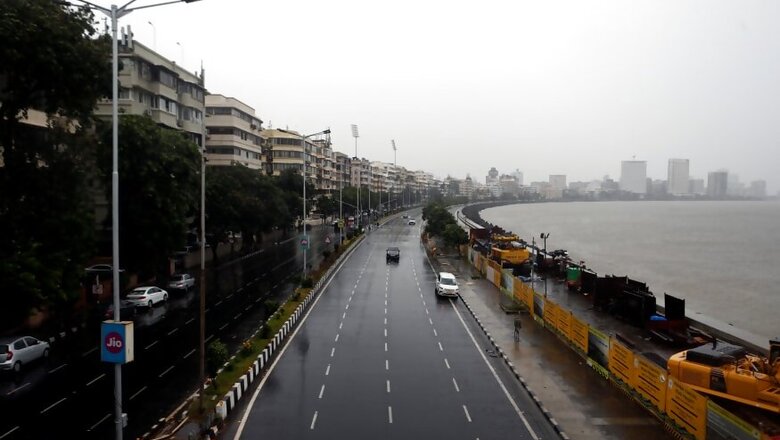
views
Severe cyclonic storm Nisarga, the first tropical cyclone to hit Maharashtra’s coast since 2009, made landfall in the coastal town of Diveagar with wind speed of 100-110 kmph and gusting up to 120 kmph. The eventual landfall point in Diveagar was more than 70kms south of Alibag, which was originally thought to be the most probable landfall spot by meteorologists, and this is likely to have spared Mumbai from the storm’s fury.
The eventual landfall point in Diveagar was more than 70 kms south of Alibag, which was originally thought to be the most probable landfall spot by meteorologists, and this is likely to have spared Mumbai from the storm’s fury.
The megapolis has never faced the full fury of a tropical cyclone in over 70 years as the last cyclone to inflict damage on the city was recorded in 1948, just after Independence. Besides, there were cyclones in 1961 and 2009 that hit Maharashtra’s coast, but none as eagerly watched as Nisarga.
Nisarga’s rapid formation, intensification and progress in the direction of Mumbai and Raigad district’s coastal towns had Mumbaikars waiting in anticipation of the cyclone’s impacts, which most of the population had not witnessed in their lifetime.
The eye of the storm reportedly passed through Roha, another inland industrial town in Maharashtra's Raigad district, that faced the burnt of the cyclone as it made an impact on land farther from Mumbai. The district reported many cases of tree falls, damage to homes and even the death of a 58-year-old man who was killed after a power transformer collapsed on him due to heavy winds.
Meanwhile, Mumbai saw squally winds and intermittent rain showers before and after the cyclone made landfall past afternoon between 12.30 - 2.30 pm. Some parts of the city, too, saw uprooting of trees and asbestos sheet roofs.
Colaba, the southernmost tip of the city, recorded the highest wind speed of over 70 kmph while the Mumbai International Airport recorded 40 kmph winds on its runway, authorities said.
The India Meteorological Department (IMD) said that the storm by and large followed the track as forecasted over the past two days since the weatherman put out a warning on the genesis of a tropical cyclone.
Scientists said that the landfall away from Alibag helped lessen the severity of the storm’s impact on Mumbai. "Certainly, it had an impact in reducing impact on Mumbai. The city would have seen a more severe impact had the landfall happened a little north near Alibag. This would have led to heavy rainfall and stronger winds," said Mrutyunjay Mohapatra, Director General, IMD.
Mumbai’s city administration had evacuated residents, including the indigenous fishermen community, to makeshift shelters in government-run schools and community centers in view of the cyclone.
M Rajeevan Nair, Secretary, Ministry of Earth Sciences explained that the landfall point is important as it determines the area of impact around it. "An area of around 90-100 kms is the most affected around the landfall point. The eventual landfall point being farther from Mumbai, the intensity and impact both weakened, which was eventually good for the city," he said.
Independent meteorologist and PhD researcher at Reading University, Akshay Deoras, also pointed out that IMD had said the cyclone will intensify in the second half of June 2, which did not happen. "Model guidance as well as the official forecast had indicated faster intensification of Cyclone Nisarga during the second half of June 2. Since the cyclone weakened instead of intensifying at this stage, it proved to be a turning point in reducing the overall impact," he said.
Nisarga was expected to intensify into a severe cyclonic storm by the night of June 2. However, It remained a cyclonic storm and intensified only on June 3 at around 6 in the morning.
Deoras also reiterated that the eventual landfall in south of Alibag certainly proved advantageous to reduce the impact on Mumbai. "Had the cyclone crossed the coast near Alibag, Mumbai would have seen stronger winds with a lot more rainfall, thereby resulting in more damage. In addition, Cyclone Nisarga’s controlled intensification rate prior to the landfall helped in mitigating the overall disaster. The cyclone had several unfavourable conditions which prevented it from reaching the severe cyclonic storm stage on June 2," he said.



















Comments
0 comment